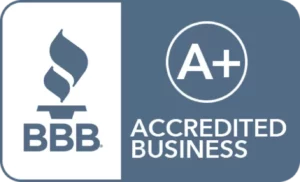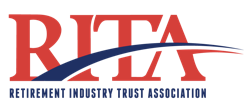The CARES Act, short for the Coronavirus Aid, Relief, and Economic Security Act, provides over $2 trillion in relief for businesses and individuals, to battle the economic effects of COVID-19. In addition to cash relief for citizens and loan programs for small businesses, there are other supports for hospitals, medical providers, and industries. Also, IRA rules have been altered to allow for easier access to your retirement savings.
The Paycheck Protection Program provides potential relief to small businesses including through changes to the loan programs that are administered through the SBA, the Small Business Administration. Loan forgiveness is built into the provisions, and there are additional loans available aside from these as well, as there are payroll-specific loans and other types.
Unemployment assistance is extended to self-employed, independent contractors, and others. Federal unemployment insurance may combine with state programs to provide additional benefits as well. Both employers and employees are granted certain provisions under the CARES Act.
In addition to the protections and changes made that employers and employees need to be aware of, there are temporary revisions loosening the rules on hardship distributions from retirement accounts for a whole new group of people: those who have lost a job because of the pandemic and those who are suffering from or have a spouse suffering from COVID-19.
Old vs. New IRA Rules
Here, we compare the usual IRA rules to the changes made because of the CARES Act. Again, to be eligible for the new rules, you (or your spouse) must have contracted Covid-19 or you must have suffered financial hardship because of it.
IRA Distributions
There are certain restrictions as to when you can withdraw funds from your IRA (or 401(k) plan). Because the IRS wants you to save money for retirement, they impose penalties on plan distributions. Under normal circumstances, if you are under age 59 1/2, a 10% early withdrawal penalty will be applied to the amount withdrawn. The CARES Act has waived this penalty for those in need. You will not be penalized for a hardship withdrawal taken during 2020.
Further, taxes are always due on the amount withdrawn during the year it was taken out. For example, if you withdrew $5,000 in 2019, that money would be treated as taxable income for the same year. Taxes would be due by your filing deadline (April 15, 2020 for most people).
The CARES Act is allowing you to spread those taxes across three years. An easy example: You withdraw $30,000 from your IRA. You can choose to report $10,000 in taxable earning for each of the next three years. This way, the heavy tax burden wouldn’t be due immediately.
Lastly, if you have a Roth IRA and are not yet eligible for tax-free distributions, any earnings withdrawn will be taxable. You may always distribute contributions made to the plan, but have to wait until age 59 1/2 to withdraw gains tax-free. Of course, no penalties will be due on amounts withdrawn this year.
RMDs
Required Minimum Distributions, or RMDs. for those owners of inherited IRAs or retirees are suspended for 2020 as well. Rather than enforcing the normal requirement that the government usually maintains, wherein tax-deferred 401(k)s and IRAs RMDs are required at age 72, these are void for the year. This means retirees may be less affected by losses as they are able to skip a year before being required to take distributions.
It’s important to note that if you had an RMD due for 2019 that has not been taken, you must fulfill that requirement. First year RMD takers have until April 1 of the following year to take his or her first RMD. That deadline has been pushed to July along with the tax deadline.
The IRA “Loan” Option
Normally, you cannot borrow funds from your IRA. That’s different than a 401(k), where you can take a loan if the plan allows for it. Therefore, if you must take funds from your IRA, you must make a taxable distribution. Technically, there’s no provision to allow for loans with an IRA.
However, there is a provision that allows you to re-pay your IRA distribution and not owe taxes. You can take an IRA distribution as outlined above like normal. The new IRA rules will allow you to re-contribute the funds you withdraw within three years. By doing so, you can avoid paying taxes on the amount withdrawn. Essentially, you can borrow the money tax- and penalty-free and use it for any purpose.
The annual contribution limits will not apply as well. For 2020, you can contribute $6,000 to your IRA ($1,000 more if at least age 50). However, you can exceed those limits if you are re-contributing funds that were taken because of the coronavirus hardship.
What Can You Do with Your IRA Funds
So many people are out of a job or hours slashed, small businesses are shuttered and families across America are in dire need of help. The stimulus checks will help some, but not enough for many people. Loans are available for small businesses, but there is a limit to how much available (and how much you may get).
The only other option for many is to dip into retirement savings. However, this shouldn’t be taken lightly. Only take what you absolutely need to get through these tough times. The new IRA rules are there for you, but don’t overuse them. You should exhaust all options first. This may include a loan from your 401(k) if you have it available to you. You have fives years to pay that back.
If you are struggling to make ends meet, worried about your business or not getting the rental income you are used to, IRA funds are there to help. Do your best to limit the amount withdrawn and try to re-contribute as much as you can, when you can.
One last thing to mention is the Self-Directed IRA. Your regular IRA or 401(k) balance probably dropped a significant amount when then markets crashed. A Self-Directed IRA allows you to go beyond traditional investments, like stocks, bonds and mutual funds.
Rather than investing in whatever your bank wants you to focus on, a Self-Directed IRA allows you to make your own determinations. You can invest in just about anything, including real estate, precious metals, small businesses and tax liens. It will also allow you to properly diversify your retirement holdings.
Learn More About the IRA Rules
Feel free to give us a call at 800.472.1043 if you have any questions about the new IRA rules. Further, be sure to check out our YouTube channel for lots of videos explaining the CARES Act. Subscribe so you can get notified when our daily videos get published!











